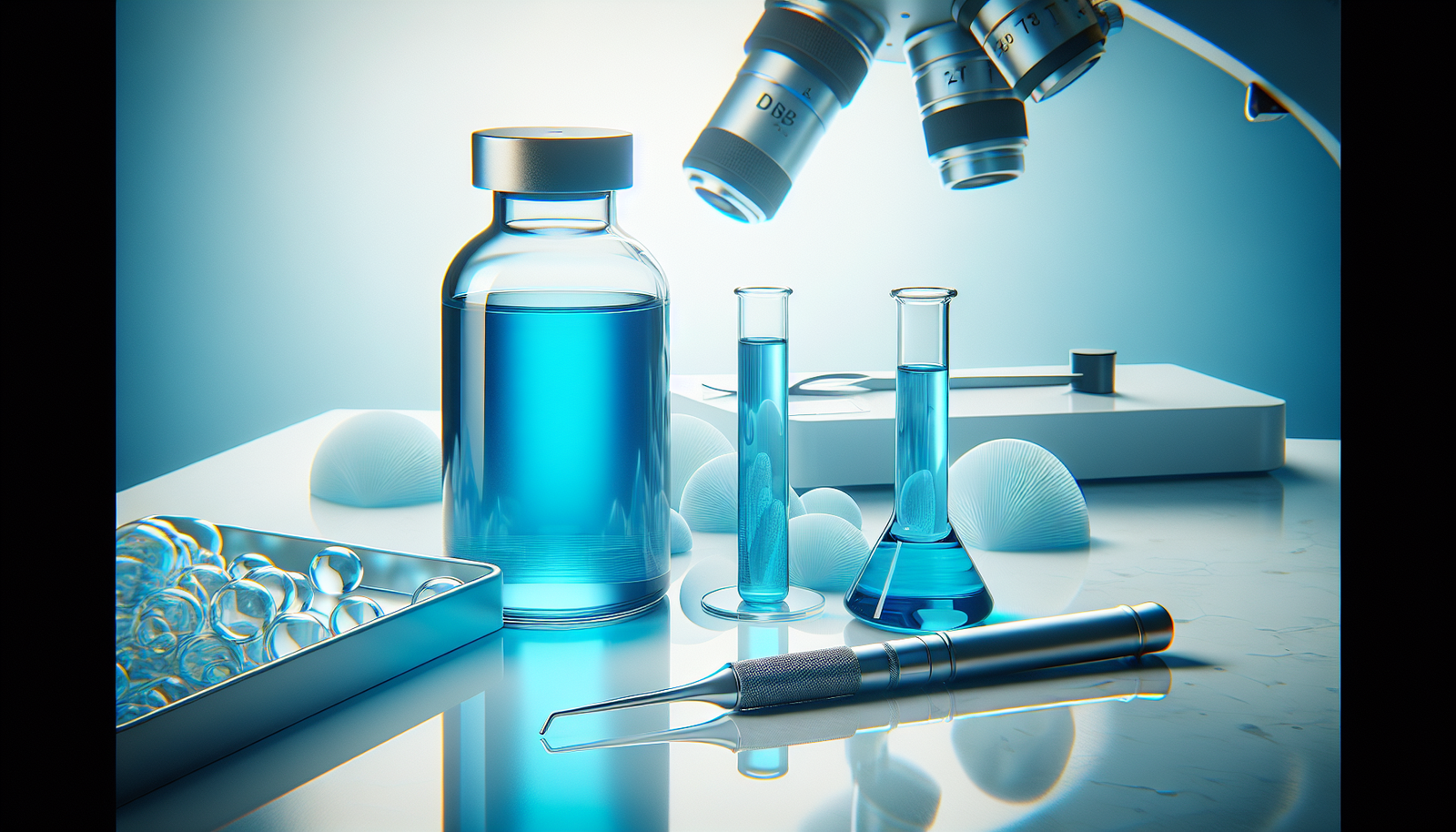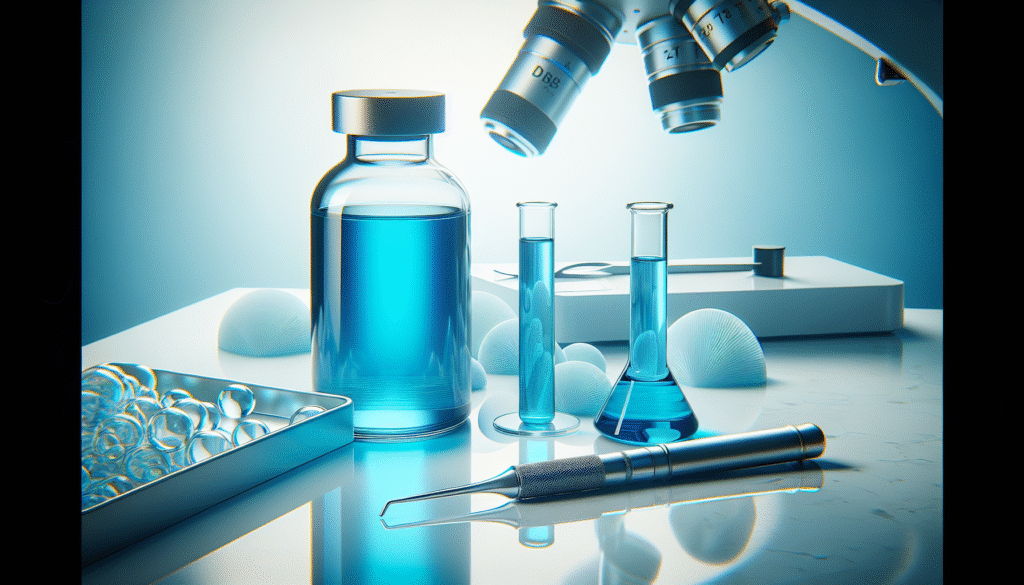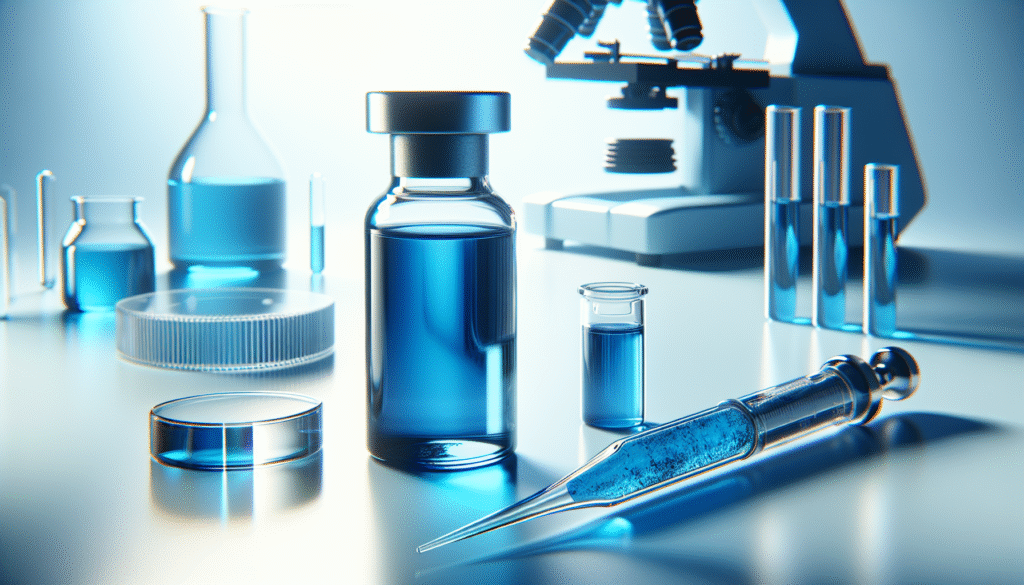
Have you ever considered the diverse applications of methylene blue and how to analyze its presence and effectiveness in various fields?

Understanding Methylene Blue
Methylene blue (MB) is a synthetic dye with a rich history in medical and scientific applications. Originally developed in the 19th century, this compound has found its way into numerous fields, including biology, chemistry, and medicine. As a diagnostic tool, methylene blue is essential for identifying certain conditions and reactions, making its analysis crucial for both research and clinical settings.
When assessing methylene blue, it is imperative to understand its chemical structure and properties, which facilitate its application across different domains. Methylene blue has distinct light-absorbing and redox properties, making it an exemplary indicator in various chemical reactions.
Chemical Properties
To effectively analyze methylene blue, understanding its chemical properties is paramount. The compound is known for its:
- Molecular Formula: C16H18ClN3S
- Molecular Weight: 319.85 g/mol
- Solubility: Highly soluble in water, making it easy to prepare and use in various concentrations.
These properties lend methylene blue its applicability as a redox dye, which is useful in applications from staining tissues in laboratories to detecting reactive oxygen species in biomedical research.
Methylene Blue in Biomedical Applications
One of the most significant fields for the application of methylene blue is medicine. Here, methylene blue serves multiple roles, from treatment options to as a staining agent for diagnostic purposes.
Role in Diagnosing Conditions
Methylene blue acts as a vital tool in diagnosing certain medical conditions, such as:
- Methemoglobinemia: This is a condition in which hemoglobin is unable to effectively release oxygen to body tissues. Methylene blue is utilized in treatment, as it can convert methemoglobin back to hemoglobin, effectively restoring oxygen transport.
- Dyes in Histology: In histopathology, methylene blue is used to stain cellular components, aiding in the visualization of structures within cells. This application is critical when diagnosing cancers and other pathological conditions.
Analyzing Methylene Blue in Biological Samples
When analyzing biological samples for methylene blue, the goal is often to determine its concentration and purity. Multiple methods can be employed, including spectrophotometry, chromatography, and electrochemical analysis.
Spectrophotometric Analysis
Spectrophotometry is a commonly used technique due to its simplicity and efficiency. Methylene blue exhibits distinct absorbance peaks, which can be measured at specific wavelengths.
- Typical Wavelength: Methylene blue has a maximum absorbance (λmax) around 664 nm.
To use this method:
- Prepare a standard solution of methylene blue in a suitable solvent (usually distilled water).
- Measure the absorbance using a spectrophotometer at the selected wavelength.
- Generate a calibration curve using known concentrations to quantify the methylene blue in unknown samples.
Chromatography
Chromatography is another powerful technique for analyzing methylene blue, especially in complex biological matrices.
High-Performance Liquid Chromatography (HPLC)
HPLC can provide precise separations and quantifications of methylene blue in mixtures.
- Procedure:
- Prepare the sample and inject it into the HPLC system.
- Utilize a suitable column and mobile phase to elute methylene blue.
- Detect using a UV-Vis detector set to absorbance at 664 nm.
HPLC is particularly advantageous for analyzing metabolic pathways involving methylene blue or its derivatives in biological contexts.
Methylene Blue in Industrial Applications
Beyond medicine, methylene blue is utilized in various industrial applications. Its distinct properties make it an ideal candidate for processes ranging from dyeing textiles to analyzing wastewater.
Textile Dyeing
In the textile industry, methylene blue functions as a dye for fabrics given its vibrant color and stability.
Analyzing Methylene Blue in Dyes
For quality control, analysis of methylene blue concentration in textile dyes is essential to ensure compliance with safety regulations.
- Preparation of Samples: Dissolve the dyed fabric in an appropriate solvent.
- HPLC or UV-Vis Spectrophotometry can be used to assess the concentration of methylene blue, ensuring consistency in dye application.
Environmental Monitoring
Methylene blue is also incorporated in analytical techniques for monitoring environmental pollutants. It is used to assess the presence of heavy metals and other contaminants in water samples.
Methods for Analyzing Methylene Blue in Water
- Colorimetric Analysis: This visual method involves comparing the color intensity of water samples treated with methylene blue against standard solutions.
- Fluorometry: This highly sensitive method capitalizes on the fluorescence properties of methylene blue. When excited by light, methylene blue emits fluorescence, quantifying its concentration in water samples.
Assessing Efficacy in Water Treatment
Methylene blue’s role in water treatment processes can be analyzed by assessing its degradation patterns in wastewater treatment facilities.
- Monitor its concentration before and after treatment processes through spectrophotometric methods.
- Evaluate the efficiency of treatment plants by examining the reduction in methylene blue concentration, which indicates their effectiveness in pollutant removal.
Methylene Blue in Research
Research applications of methylene blue extend to fields such as microbiology, pharmacology, and environmental science. Its versatile functionalities allow it to serve as an important reagent in studies.
Microbial Staining
In microbiological studies, methylene blue is used commonly to distinguish between viable and non-viable cells.
Procedure for Staining
- Prepare a bacterial culture.
- Stain with methylene blue and allow it to incubate for a specified time.
- Rinse off excess dye and observe under a microscope. Living cells retain color while dead cells typically do not.
This method facilitates quick assessments of microbial health and viability.
Pharmacological Research
Pharmacologically, methylene blue has attracted attention for its potential use in neuroprotection and as an adjunct treatment for various conditions.
Analyzing Drug Efficacy
To study methylene blue’s effects in pharmacology:
- Conduct in vitro or in vivo experiments, administering known quantities of methylene blue.
- Measure biochemical markers or observe cell line reactions through spectrophotometric or chromatographic methods.
The insights gained can reveal important correlations between methylene blue concentration and biological effects, shaping future therapeutic strategies.

Limitations and Safety Concerns
While methylene blue is a versatile compound with numerous applications, it is not without its limitations and safety concerns. Understanding these aspects is crucial for responsible use and analysis.
Concentration Limits
Methylene blue can exhibit cytotoxic effects at high concentrations.
- Threshold Levels: For biomedical applications, concentrations over 2 mg/mL may exhibit toxic effects, necessitating careful attention during analysis.
Safety Precautions
It is vital to follow safety protocols when handling methylene blue, including:
- Personal Protective Equipment (PPE): Always wear gloves, goggles, and lab coats to avoid exposure.
- Proper Disposal: Dispose of methylene blue waste following institutional guidelines to prevent environmental contamination.
By recognizing these limitations and being diligent with safety standards, you can mitigate risks while working with methylene blue.
Conclusion
Analyzing methylene blue involves a multifaceted approach across various applications, each with its distinct methodologies and considerations. Whether engaged in biomedical research, industrial applications, or environmental monitoring, the ability to quantify and analyze methylene blue effectively is of utmost significance.
As you navigate through the complexities of methylene blue analysis, being equipped with knowledge about its chemical properties, analytical methods, and safety protocols is crucial. In doing so, you not only contribute valuable insights to your field but also uphold the standards of safety and responsibility inherent in scientific exploration.
By understanding the rich background and applicability of methylene blue, you position yourself to engage meaningfully with the substance whether in research, industry, or environmental settings. The insights you gain through careful analysis can prove invaluable, guiding future endeavors and fostering advancements across multiple disciplines.